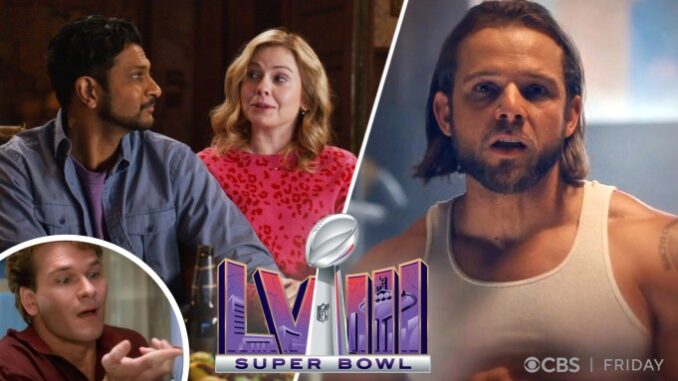
When Spectral Shenanigans Meet Gridiron Glory: A Super Bowl Crossover for the Ages
The Super Bowl is a cultural behemoth, a spectacle of athleticism, entertainment, and, increasingly, elaborate advertising. But CBS, in their quest to capture eyeballs and generate buzz, delivered something truly unexpected: a collision of the spectral and the sporty, a comedic masterclass featuring the ghostly inhabitants of Woodstone Manor from their hit show "Ghosts" alongside the gridiron giants of the NFL. The result, a promotional campaign that could be aptly titled "Ghosts and Ghost Collide," was not just another commercial break; it was a hilarious, meta-narrative experience that cleverly exploited the sitcom's unique premise to amplify the Super Bowl’s already stratospheric appeal.
The brilliance of the crossover lay in its simplicity. "Ghosts" revolves around a young couple, Samantha and Jay, who inherit a dilapidated mansion only to discover it's teeming with a diverse cast of spirits from different historical eras. This built-in ensemble, each with their distinct personalities and an inability to leave the property, provided fertile ground for comedic scenarios. The promos tapped into this existing dynamic, cleverly positioning the Super Bowl as the ultimate event these restless souls would want to witness, but could never fully experience.
Imagine Sassapis, the acerbic Native American spirit, grumbling about the historical inaccuracies surrounding the sport's origins. Picture Thorfinn, the Viking, mistaking a touchdown for a heroic raid, bellowing war cries at the television. And consider the prim Hetty, a pious socialite from the 18th century, scandalized by the skimpy outfits of the cheerleaders. These scenarios, rife with anachronistic humor and character-driven jokes, resonated because they stayed true to the spirit (pun intended) of the show. They weren't just using the characters as puppets to hawk the Super Bowl; they were organically weaving the event into their already established world.
Furthermore, the promos cleverly played with the concept of accessibility, or rather, the lack thereof. The ghosts, unable to physically interact with the mortal world, could only watch and comment. This created a sense of frustrated longing that mirrored the shared experience of millions of viewers, glued to their screens, vicariously living the excitement of the game. We see them trying, and failing, to high-five each other after a successful play, their translucent hands passing right through. This physical limitation became a source of endless comedic potential, a constant reminder of their spectral predicament.
But the truly genius move was the inclusion of real NFL players within the "Ghosts" universe. These athletes, usually portrayed as titans of strength and strategy, were now forced to interact with the absurdity of the situation. Imagine a star quarterback, bewildered by the constant commentary from a chorus of ghosts only he can't see or hear, fumbling the ball in confusion. Or a seasoned coach, trying to diagram a play while being interrupted by a spectral flapper offering unsolicited advice. This juxtaposition of the mundane and the extraordinary, the real and the supernatural, elevated the promos beyond simple advertising and transformed them into a piece of self-aware entertainment.
The "Ghosts and Ghost Collide" promos also excelled in their self-referential humor. They acknowledged their own purpose as a promotional tool, often with a wink and a nod. The ghosts might sarcastically comment on the excessive commercial breaks or the exorbitant price of Super Bowl ads. This meta-awareness endeared the campaign to viewers who are often bombarded with overly serious and self-aggrandizing marketing efforts. By poking fun at the very institution they were promoting, CBS managed to create a sense of genuine connection with their audience.
In conclusion, the Super Bowl crossover promotion featuring the cast of "Ghosts" was a resounding success. It wasn't just a string of commercials; it was a carefully crafted comedic event that seamlessly blended the worlds of spectral sitcom and gridiron glory. By leveraging the show's unique premise, embracing its established characters, and injecting a healthy dose of self-aware humor, CBS crafted a campaign that was not only effective in promoting the Super Bowl but also entertaining and memorable. It served as a potent reminder that even the most established cultural events can benefit from a little bit of ghostly, and genuinely hilarious, intervention. The collision of "Ghosts and Ghost" proved to be a touchdown in the realm of Super Bowl advertising, leaving viewers eagerly anticipating what spectral shenanigans might haunt the gridiron in the years to come.
